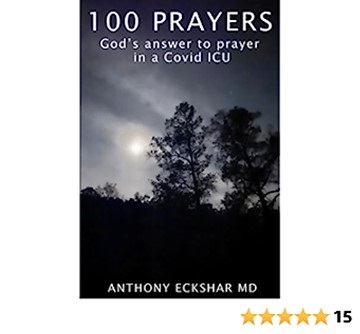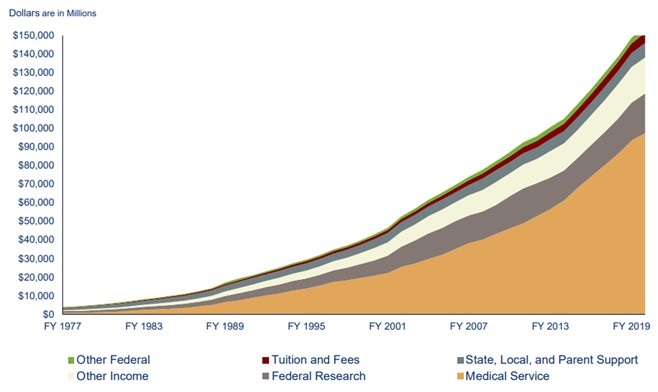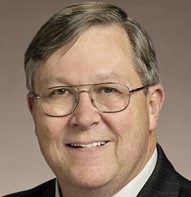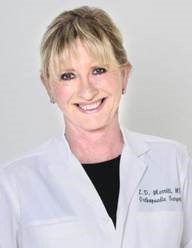Robert A. Raschke MD
Tyler J. Glenn MD
Kim I. Josen MD
HonorHealth Scottsdale Osborn Medical Center
Scottsdale, AZ USA
These are some clinical observations made after over the past 10 months, working in a busy COVID-19 ICU unit in Scottsdale, AZ. The opinions expressed here are those of the private practice authors.
Overview of triage and rounding on large numbers of COVID-19 patients in the ICU service. Our approach to bedside care of our ICU service has required abbreviation for the sake of efficiency in the face of more than a doubling of our census. Our approach to rounding is opinion-based. We’ve been forced to evolve our triage and rounding systems in order to survive.
Our hospital uses the Abbott ID-Now® rapid point-of -are test for screening all COVID-19-asymptomatic patients admitted to our hospital, but due to its low sensitivity in hospitalized patients (1). We do not trust it to rule-out COVID-19 in patients with pneumonia being admitted to the ICU and also order an in-house PCR for such patients prior to, or upon ICU admission. We are cautious about transferring COVID-19 patients out of the ICU on bilevel positive airway pressure (BiPAP) or high-flow nasal cannula since many such patients have deteriorated and bounced-back to the unit within the subsequent week.
We try to see as many of our COVID-19 ICU patients (who are practically all our patients) sequentially, without interruption if possible, leaving our masks and gowns on continuously and moving quickly from room to room, changing only gloves between patients unless a bacterial pathogen that requires contact isolation has been identified. Little/no helpful information can be gleaned by entering the room of patient who is proned in a rotoprone bed. Such patients may only be supined for brief periods, sometimes in the middle of night shift; and discussion with the nurses regarding their physical exam findings during supine positioning is high yield. Auscultation of COVID-19 patients using isolation stethoscopes is seldom of value. Palpation of the neck/trunk for crepitus, neurological examination (especially in patients emerging from heavy sedation and/or supined after prolonged proning), and assessment of fluid status are high yield. We keep track of how many days the patient has received mechanical ventilation, the cumulative fluid balance (which sometimes gets very positive), and signs and lab values possibly related to complications of COVID-19 discussed below. The duration of antibiotics and sedation medications needs constant monitoring to avoid overuse. We do not routinely follow serial INR, ferritin, CRP, or D-dimer, since these do not affect patient management. We sometimes use BNP and procalcitonin to trigger further cardiac or infectious disease evaluations respectively. We do not treat isolated elevated procalcitonin with antibiotics, nor do we treat isolated d-dimer with therapeutic dose anticoagulation.
We have been conservative in our treatment of COVID-19, relying primarily on dexamethasone and usual evidence-based critical care practice. Over the course of the outbreak, our conservative approach has been validated; various hyped but off-label therapies (hydroxychloroquine, antirheumatic therapies, universal therapeutic anticoagulation) have failed to show benefit and possibly caused harm when subjected to evidence-based scrutiny (2,3). Benefits of remdesivir in patients with advanced respiratory failure seem unclear/minimal (4). Most of our patients present to the ICU in the second or third week of illness, already having developed IgG antibodies and therefore unlikely to benefit from convalescent serum or monoclonal antibodies.
Clinical course and management of respiratory failure. Many patients remain awake and able to tolerate spontaneous ventilation with non-invasive ventilation and/or high-flow nasal canula oxygen delivering high FiO2, for as long as two weeks before they either recover or require endotracheal intubation. Before the current outbreak, it was unusual to manage severely hypoxemic patients without intubation and mechanical ventilation. For COVID-19, it seems to be the norm, with intubation delayed until the last possible moment, as it is unclear that mechanical ventilation with its attendant complications (immobility, sedation, invasive support apparatus) offer any definite benefit. Once intubated, many patients seem to transition abruptly to refractory hypoxemia and hypercarbia, which previously would have made them candidates for Extracorporeal membrane oxygenation (ECMO) transfer. In one recent case, we requested ECMO evaluation for a patient prior to intubation, anticipating that he would deteriorate badly immediately thereafter. The consultant requested intubation before ECMO evaluation, and indeed, once intubated, the patient immediately became too unstable for uncannulated transfer. In general, the numbers of patients fulfilling historical criteria for ECMO consideration have greatly overwhelmed ECMO capacity.
We have tried several approaches to invasive mechanical ventilation, but each has drawbacks. Our primary mode of ventilation, pressure-regulated volume control, has sometimes resulted in high plateau and driving pressures as respiratory system compliance worsens. We’ve used pressure control ventilation in some patients to limit driving pressure, but this has led to unrecognized worsening of respiratory acidosis in some. We have managed several episodes of cardiac arrest due to uncontrolled combined respiratory and metabolic acidosis in COVID-19 patients being treated with permissive hypercapnia ventilation who subsequently developed acute renal failure. We are now trying airway pressure-release ventilation (APRV) as an optional approach in which we try to avoid proning and heavily sedating the patient, but aim for Richmond Agitation-Sedation Scale (RASS) of -1 to -2 and allow maintenance of spontaneous respiratory efforts by the patient during “T high”. It is not clear whether any of these approaches results in better clinical outcomes.
Our use of prone positioning has increased dramatically. Self-proning of awake patients receiving non-invasive mechanical ventilation or high-flow nasal canula oxygen has allowed some to survive episodes of severe oxygen desaturation and avoid intubation. We have extensively utilized proning in mechanically ventilated patients with PaO2/FiO2 <150. Several of our patients experienced cardiopulmonary arrest when briefly supined resulting in several fatalities. Consequently, we have learned to placed US-guided internal jugular central venous catheters and chest tubes in patients in proned and semi-proned positions. We have noted that at some point, prone positioning needs to be abandoned if the patient is ever going to recover, even if their PaO2/FiO2 ratio falls upon supine positioning. In such patients, supine positioning allows reduction of heavy sedation and resumption/improvement of spontaneous breathing efforts that may allow ventilator weaning to slowly proceed.
Complications of COVID-19 in the ICU. We have seen more barotrauma than previously described, some occurring during non-invasive ventilation prior to endotracheal intubation (5). Point of care chest ultrasonography has been instrumental in several cases in which anterior pneumothoraces were not clearly apparent on chest radiography, except perhaps as a deep sulcus sign, and also to rapidly rule-out pneumothorax as a cause of acute cardiopulmonary decompensation.
Hypotension requiring intravenous vasopressors is common (6). In many cases, it seems due to sepsis and sedation with propofol and/or dexmedetomidine. We have occasionally seen acute or chronic cardiomyopathy, but not as often as noted early in the pandemic (7). We have repeatedly diagnosed relative adrenal insufficiency later in the hospital course –after dexamethasone has been discontinued. Such patients commonly received etomidate during intubation which could possibly be contributory.
Bacterial co-infections are uncommon at presentation, consistent with published meta-analysis (8), and we do not routinely give antibiotics to all patients with COVID-19 pneumonia up front. Later in the course of mechanical ventilation, many patients experience recurrent fever, leukocytosis, elevated procalcitonin and/or worsening pulmonary status prompting endotracheal secretion and blood cultures and empirical antibiotics. We have commonly isolated a wide variety of potential bacterial pathogens from the respiratory secretions of such patients including methicillin-sensitive Staphylococcus aureus (MRSA), methicillin-resistant Staphylococcus aureus (MRSA), gram negative rods, some multi-drug resistant. We recently isolated carbapenem-resistant Enterobacter. It is uncertain whether these represent true cases of secondary pneumonia.
Coagulopathy related to COVID-19 is complex and increased risk of thrombosis and bleeding seem apparent (9). We administer enhanced prophylactic-dose anticoagulation to all our patients (typically 40mg enoxaparin every 12 hours in patients without morbid obesity or renal failure), but do not treat elevated d-dimers with therapeutic anticoagulation in the absence of documented venous thromboembolism (4). A minority of our patients have had documented venous thromboemboli prior to ICU admission and a few have had acute myocardial infarctions and strokes. We try to get CT angiography of the chest and doppler ultrasound of the lower extremities on all patients requiring mechanical ventilation. Bedside ultrasonography demonstrating acute right heart failure has been helpful in a few cases in which pulmonary emboli were suspected but the patient too unstable for CT angio or VQ scan. Three of our patients experienced CNS hemorrhages, two of which were fatal. Gastrointestinal bleeding is not uncommon.
Acute renal failure is common and complicates permissive hypercarbia, sometimes necessitating high dose bicarbonate infusions (6). Circuit thrombosis during dialysis is common, perhaps a manifestation of COVID-19 coagulopathy, and sometime necessitating therapeutic anticoagulation.
End of life issues. It is our impression that the mortality in intubated patients is higher this winter than it was previously in the pandemic. This might be because patients are receiving more aggressive therapy earlier in the course of illness, and often are only intubated after failing a prolonged course of non-invasive mechanical ventilation. Perhaps this selects treatment-unresponsive patients for intubation. Prognostication seems very difficult. We treated an 89-year patient with severe comorbidities who rapidly recovered after a 4-day course of mechanical ventilation and a 28-year-old previously healthy man who died despite receiving veno-venous ECMO. We have not found clinical scoring systems such as
Sequential Organ Failure Assessment (SOFA) to be helpful in prognosis, since many patients have isolated severe single organ dysfunction at the time of ICU admission, and therefore have similar SOFA scores – mostly comprised of points given for severe respiratory failure. Old-fashioned bedside common sense and family discussion still seem the best approach to determining code status. It is logistically difficult/impossible to safely administer CPR to some patients who are proned, especially those that are morbidly obese. We have told families that we are instituting limited code status (no CPR, no ACLS) in such situations, subsequently discussing resumption of full code status if/when the patient recovers enough to tolerate resumption of supine positioning.
Psychosocial issues. Incredible emotional injury is being experienced by patients’ families. Several of our patients come from families in which two or three primary relatives have already died from COVID-19. We called one patient’s wife to inform her that her husband had narrowly survived a prolonged arrest secondary to pneumothorax, interrupting her during her son’s funeral, who had died from COVID-19 pneumonia the previous week. Eventually, that family suffered the death of three primary relatives from COVID-19 over the course of three weeks.
We have tried to use cellular technology to help mitigate restricted family visitation, but it seems a poor substitute. Our nurses have had some patients make cell phone video messages to their loved ones before intubation – sometimes the last memory their families will ever have of them. We have held our cellphones by the ears of COVID-19 patients as they are dying so that their loved ones can say goodbye. It was heart-wrenching to hear a husband of 42 years sobbing uncontrollably over the phone, telling his dying wife that he loved her, and how much he’s going to miss her as we prepared to remove her endotracheal tube to let her die.
The nurses, respiratory techs and physicians have shown incredible bravery and self-sacrifice and outward morale is good. But all are suffering severe vicarious injuries the full effect of which may not be apparent for years to come. Much of the human connection previously so important to ICU practice has been lost – few of the patients can interact, and the families are generally not allowed to visit. We simply don’t have the time anymore to call them as often as we would like, and it’s unusual to call them with good news. We should plan for a future increase in PTSD and burn-out among healthcare providers.
We are grateful to have received my COVID-19 vaccination, and I was sincerely astounded by the organizational excellence of the vaccination event implemented by HonorHealth here in Phoenix. They did a very good job that will serve our entire vaccine-willing population in the coming months.
References
- Basu A, Zinger T, Inglima K, Woo KM, Atie O, Yurasits L, See B, Aguero-Rosenfeld ME. Performance of Abbott ID Now COVID-19 Rapid Nucleic Acid Amplification Test Using Nasopharyngeal Swabs Transported in Viral Transport Media and Dry Nasal Swabs in a New York City Academic Institution. J Clin Microbiol. 2020 Jul 23;58(8):e01136-20. [CrossRef] [PubMed]
- WHO Solidarity Trial Consortium, Pan H, Peto R, Henao-Restrepo AM, et al. Repurposed Antiviral Drugs for Covid-19 - Interim WHO Solidarity Trial Results. N Engl J Med. 2020 Dec 2:NEJMoa2023184. [CrossRef] [PubMed]
- Salama C, Han J, Yau L, et al. Tocilizumab in Patients Hospitalized with COVID-19 Pneumonia. N Engl J Med. 2020 Dec 17. [CrossRef] [PubMed]
- American Society of Hematology. COVID-19 Resources: COVID-19 and VTE/Anticoagulation: Frequently asked questions. Version 5.1 (last updated December 24, 2020). Available at: https://www.hematology.org/covid-19/covid-19-and-vte-anticoagulation (accessed 1/3/21).
- Botta M, Tsonas AM, Pillay J, et al., PRoVENT-COVID Collaborative Group. Ventilation management and clinical outcomes in invasively ventilated patients with COVID-19 (PRoVENT-COVID): a national, multicentre, observational cohort study. Lancet Respir Med. 2020 Oct 23:S2213-2600(20)30459-8. [CrossRef] [PubMed]
- Cummings MJ, Baldwin MR, Abrams D, et al. Epidemiology, clinical course, and outcomes of critically ill adults with COVID-19 in New York City: a prospective cohort study. Lancet. 2020 Jun 6;395(10239):1763-1770. [CrossRef] [PubMed]
- Arentz M, Yim E, Klaff L, Lokhandwala S, Riedo FX, Chong M, Lee M. Characteristics and Outcomes of 21 Critically Ill Patients With COVID-19 in Washington State. JAMA. 2020 Apr 28;323(16):1612-1614. [CrossRef] [PubMed]
- Langford BJ, So M, Raybardhan S, Leung V, Westwood D, MacFadden DR, Soucy JR, Daneman N. Bacterial co-infection and secondary infection in patients with COVID-19: a living rapid review and meta-analysis. Clin Microbiol Infect. 2020 Dec;26(12):1622-1629. [CrossRef] [PubMed]
- Helms J, Tacquard C, Severac F, et al., CRICS TRIGGERSEP Group (Clinical Research in Intensive Care and Sepsis Trial Group for Global Evaluation and Research in Sepsis). High risk of thrombosis in patients with severe SARS-CoV-2 infection: a multicenter prospective cohort study. Intensive Care Med. 2020 Jun;46(6):1089-1098. [CrossRef] [PubMed]
- Hayek SS, Brenner SK, Azam TU, et al. In-hospital cardiac arrest in critically ill patients with covid-19: multicenter cohort study. BMJ. 2020 Sep 30;371:m3513. [CrossRef] [PubMed]
Cite as: Raschke RA, Glenn TJ, Josen KI. Clinical Care of COVID-19 Patients in a Front-line ICU. Southwest J Pulm Crit Care. 2021;22(1):11-15. doi: https://doi.org/10.13175/swjpcc070-20 PDF
 Monday, July 17, 2023 at 8:00AM
Monday, July 17, 2023 at 8:00AM 
 COVID-19,
COVID-19,  ICU,
ICU,  book review,
book review,  burnout,
burnout,  faith,
faith,  nurse,
nurse,  pandemic,
pandemic,  physician,
physician,  prayer,
prayer,  scientific method
scientific method 


